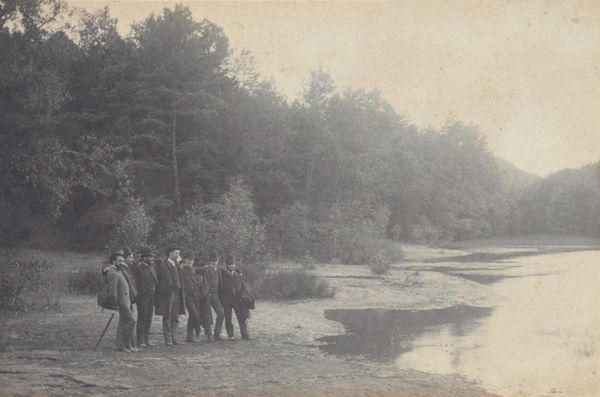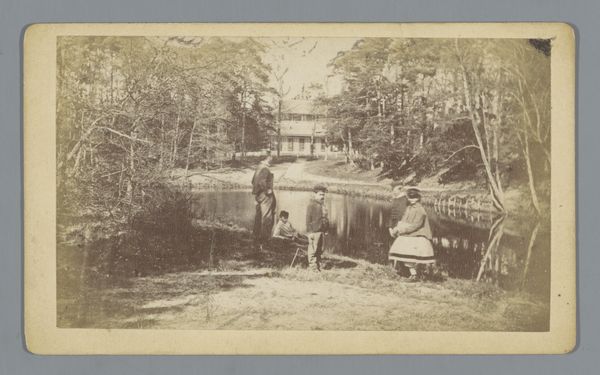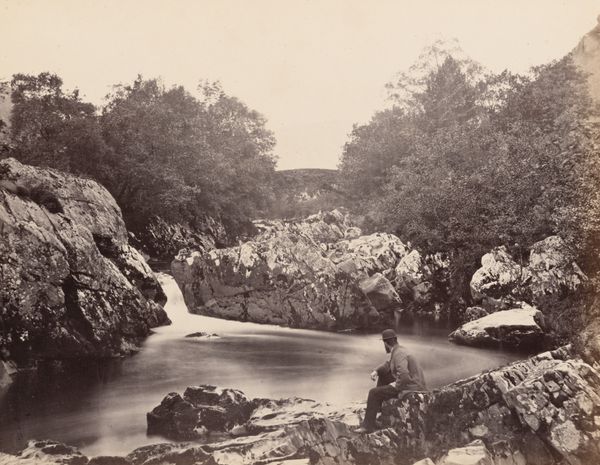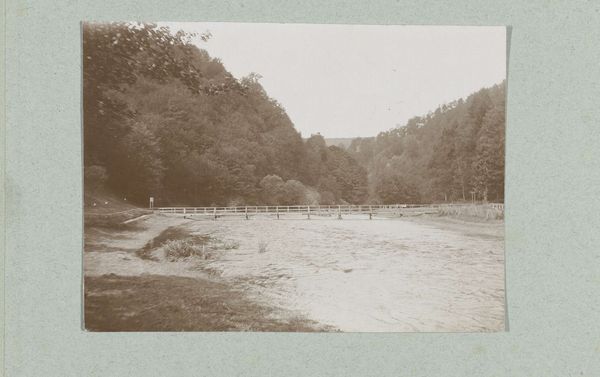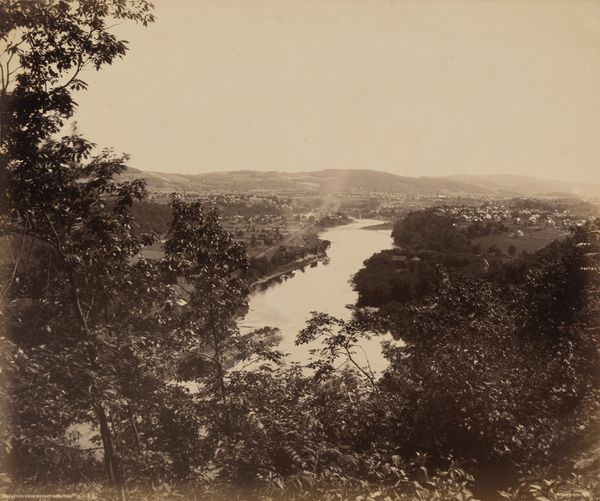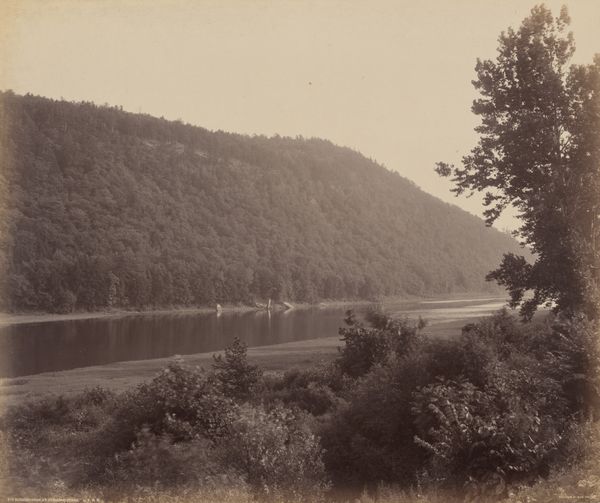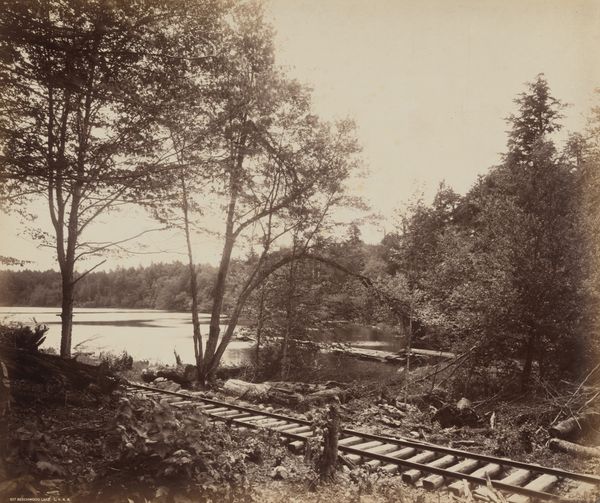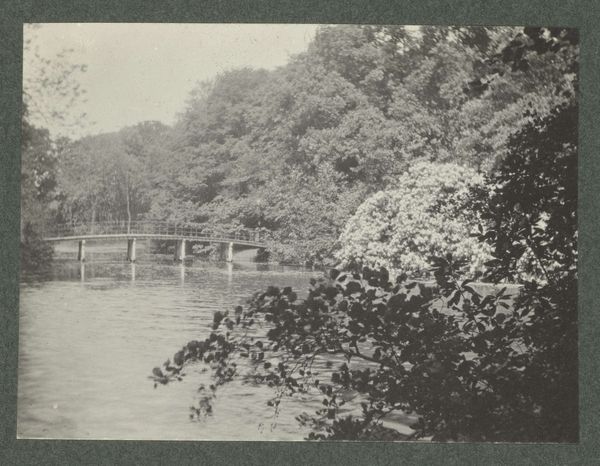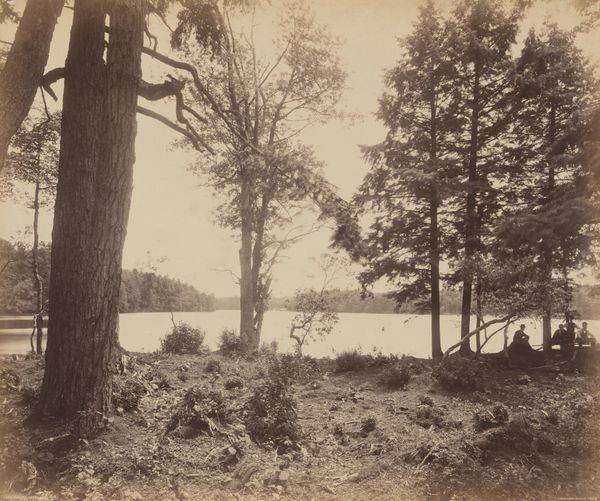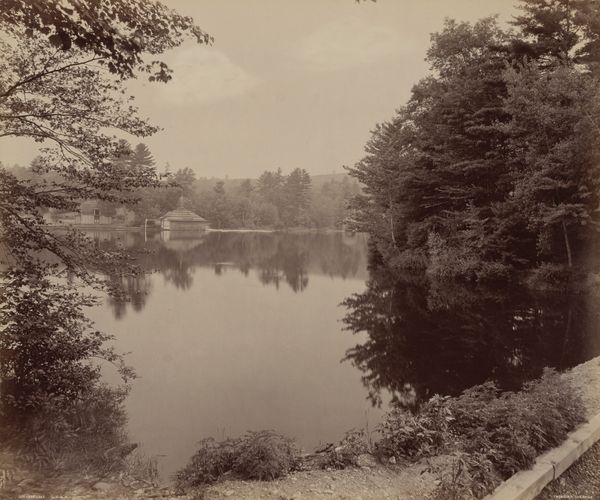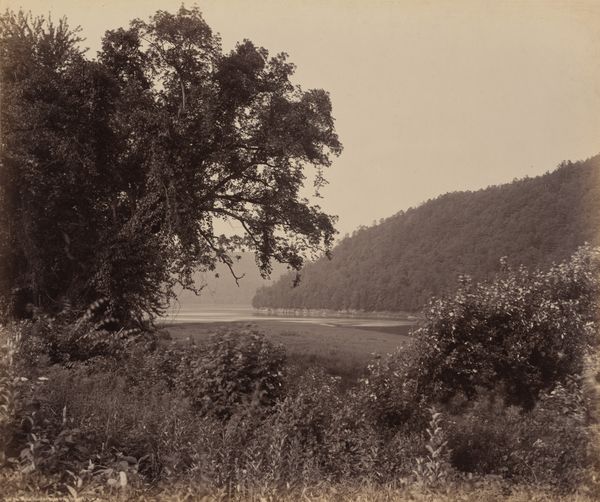
photography
#
portrait
#
impressionism
#
landscape
#
photography
#
realism
Dimensions: image: 9.4 x 14.7 cm (3 11/16 x 5 13/16 in.) page size: 13.6 x 22 cm (5 3/8 x 8 11/16 in.)
Copyright: National Gallery of Art: CC0 1.0
Editor: This is Alfred Stieglitz's photograph, "Freienwalde a. O.," from 1886. It depicts a group of people by a lake, all rendered in a soft, almost hazy light. There’s a melancholy feel to the whole scene. How do you interpret this work? Curator: Beyond the immediate impression of a melancholic scene, I see a visual representation of social stratification. Note the attire of the figures. They are dressed in dark, formal wear which distinguishes them starkly from the natural setting. In the late 19th century, such clothing symbolized middle-class respectability and participation in a capitalist structure increasingly estranged from the working classes’ relationship with the natural world. Editor: I see what you mean. So, you’re saying it's not just a simple landscape with figures? Curator: Exactly. Consider the historical context: the late 19th century witnessed rapid industrialization, leading to greater class disparities and a growing tension between humanity and nature. This photo becomes an artifact reflecting anxieties about modernization, perhaps unintentionally on Stieglitz’s part, or perhaps not. Editor: But the figures are looking out at the lake... Curator: Precisely. Are they admiring nature? Or are they contemplating their place within it, their disconnection from it even? Perhaps there is a collective sense of loss being portrayed in that gaze? Moreover, we can ask about *who* is in the scene: where are the women, for instance, and what might this mean in relation to notions of masculinity and seeing? Editor: That’s a fascinating way to look at it! It really changes my understanding of the photograph. I was stuck on just the aesthetic quality. Curator: Which is easy to do with such a beautiful and subtle photograph, and also worth considering. However, art often functions as a mirror, reflecting back at us the unspoken realities of its time. Hopefully you leave this conversation having new questions regarding the work.
Comments
No comments
Be the first to comment and join the conversation on the ultimate creative platform.
